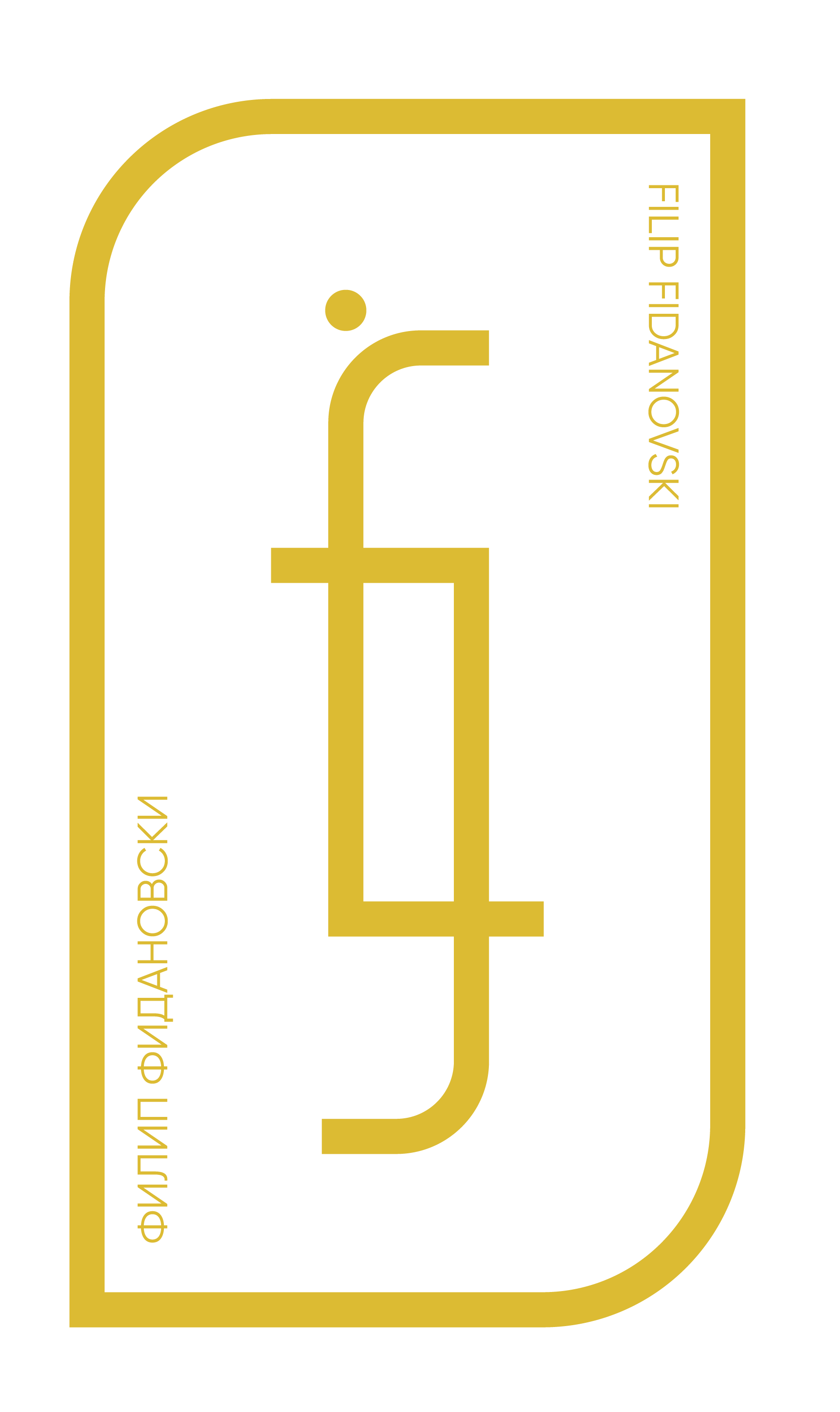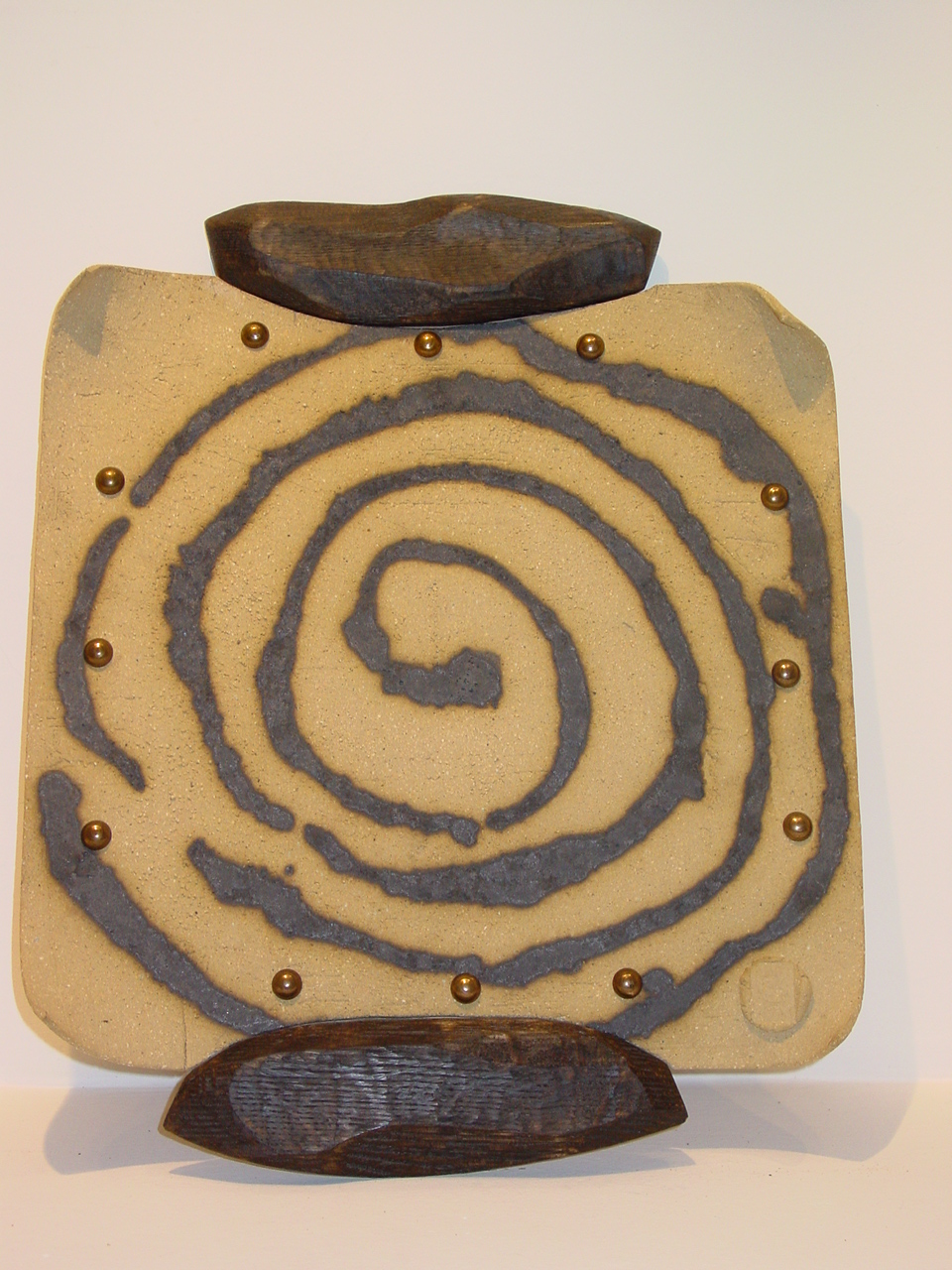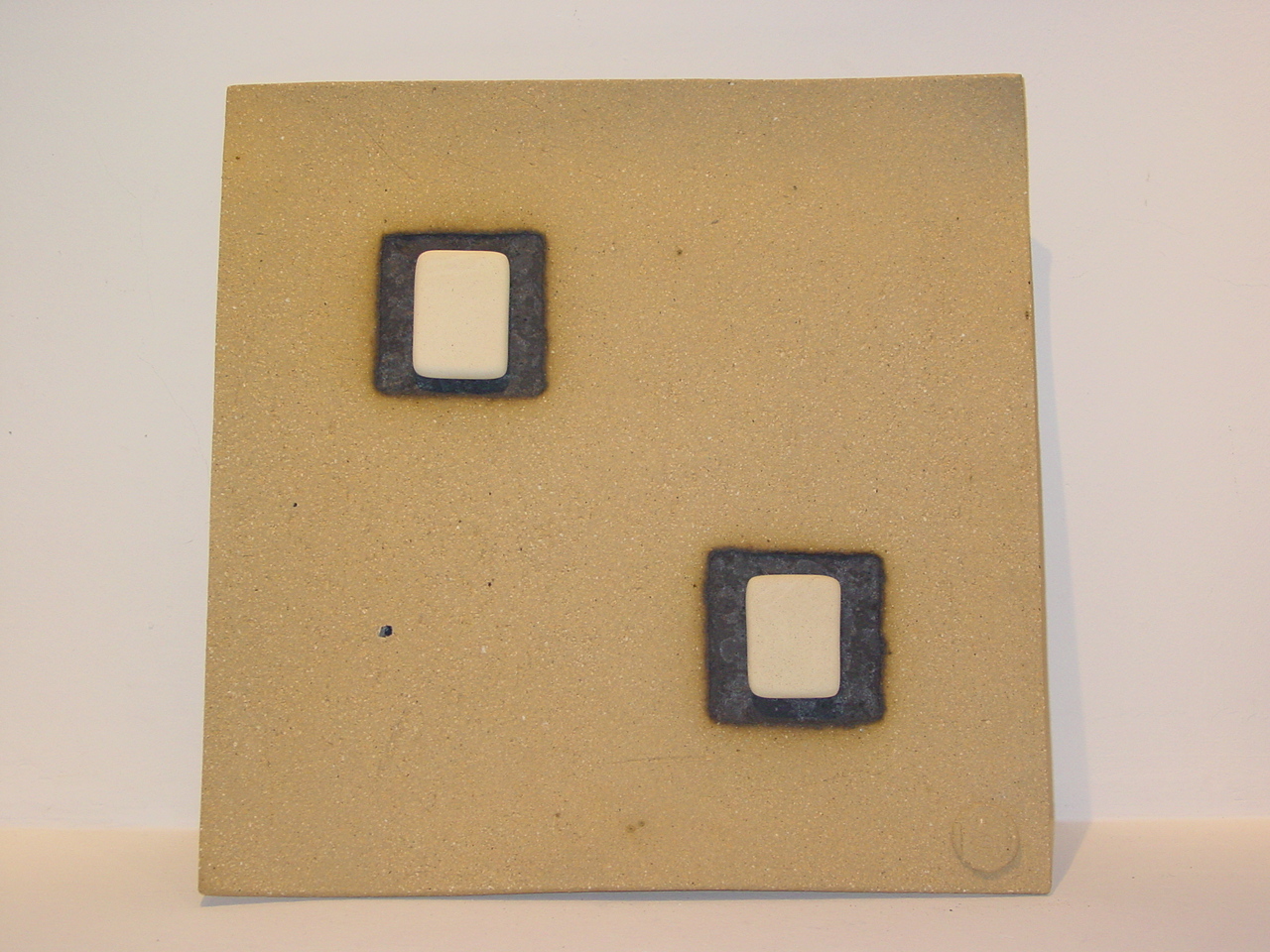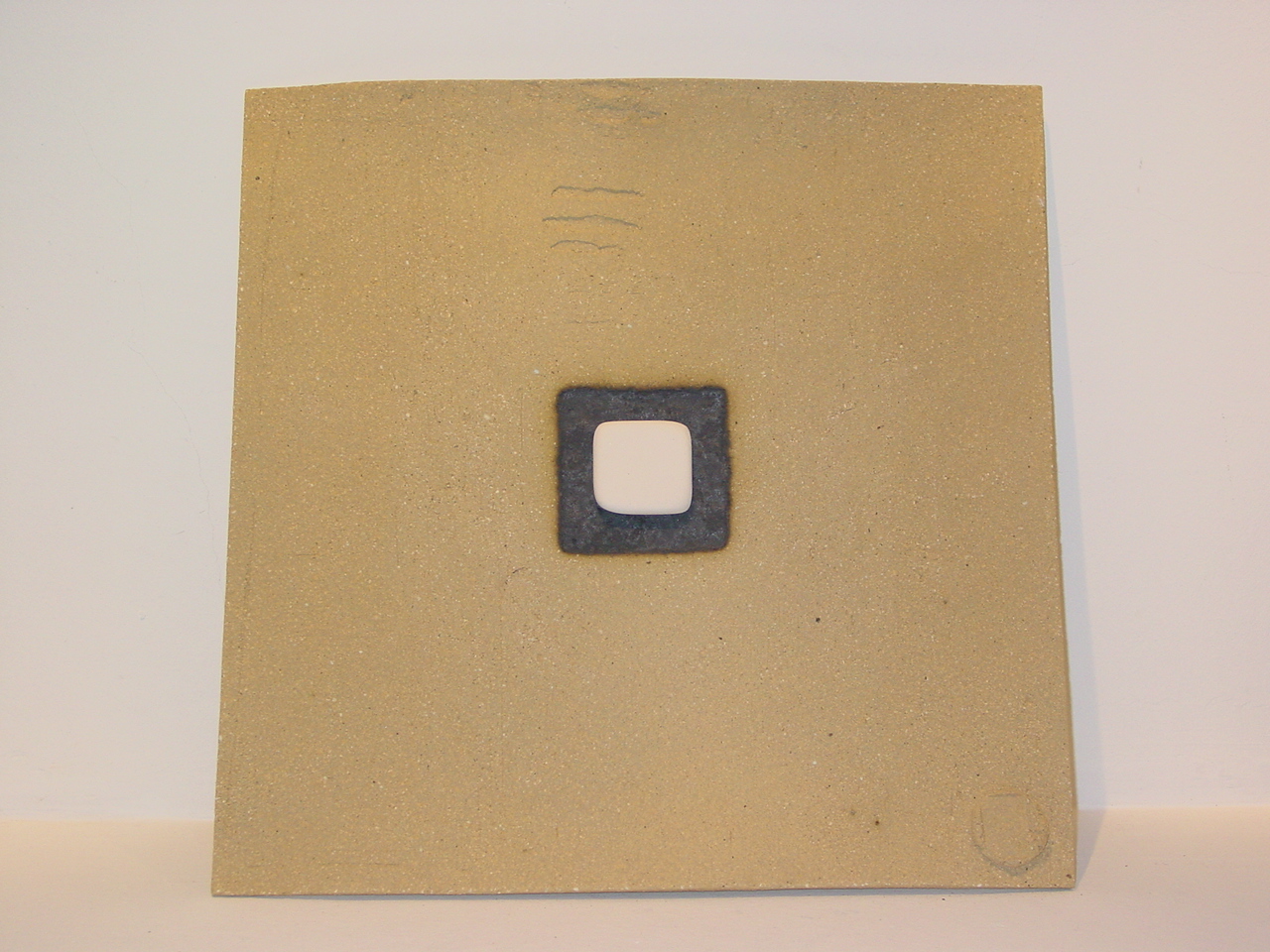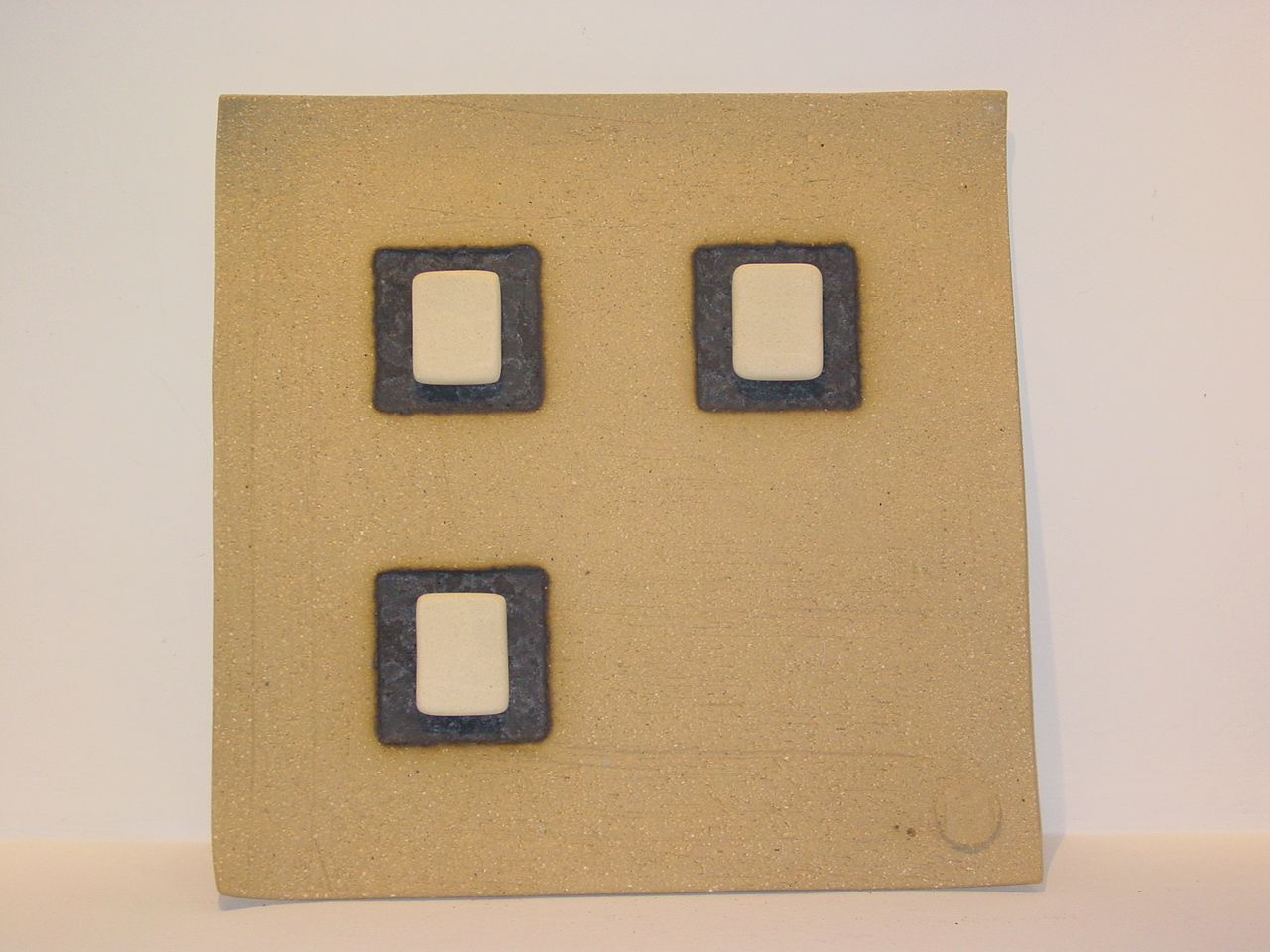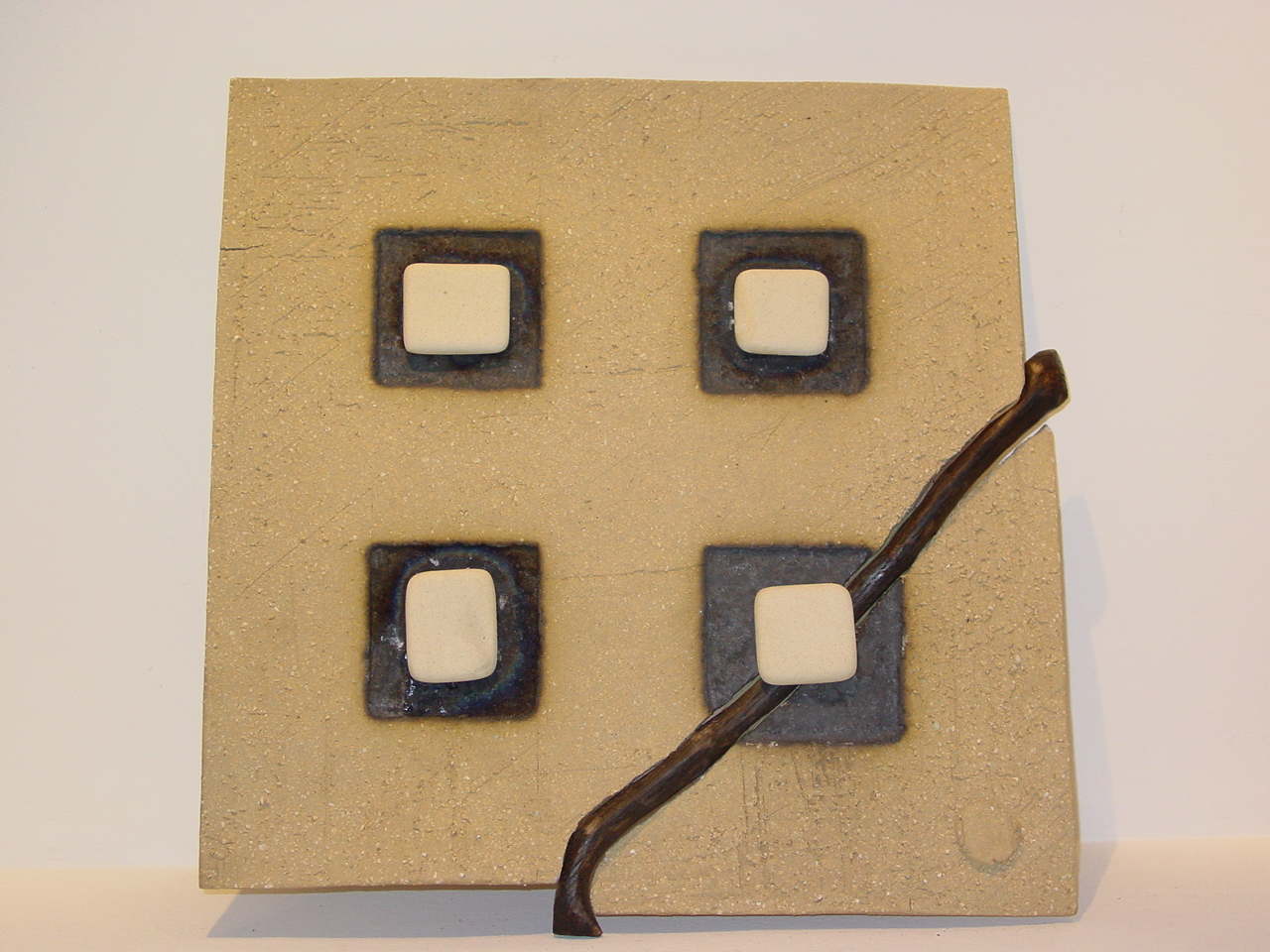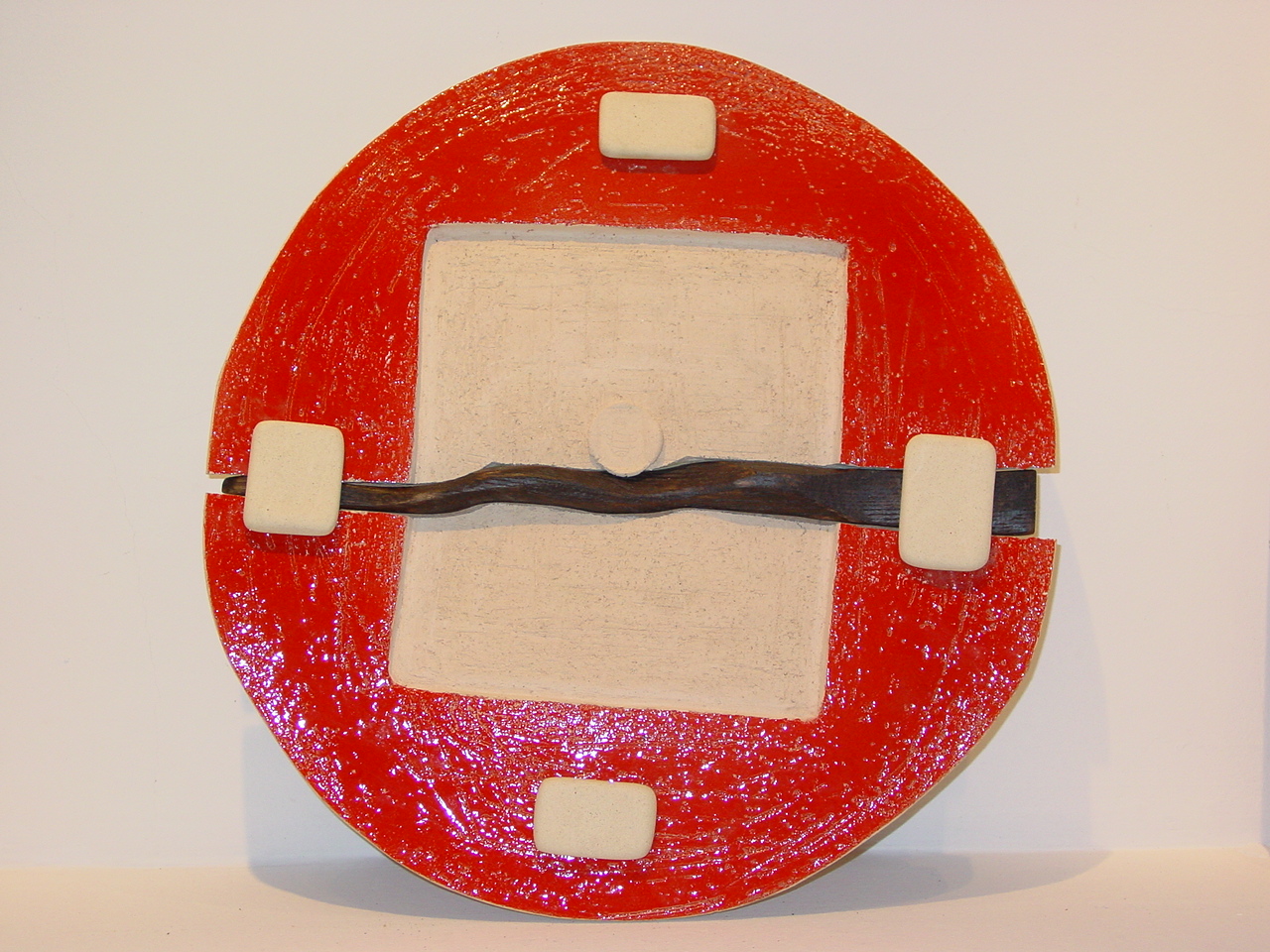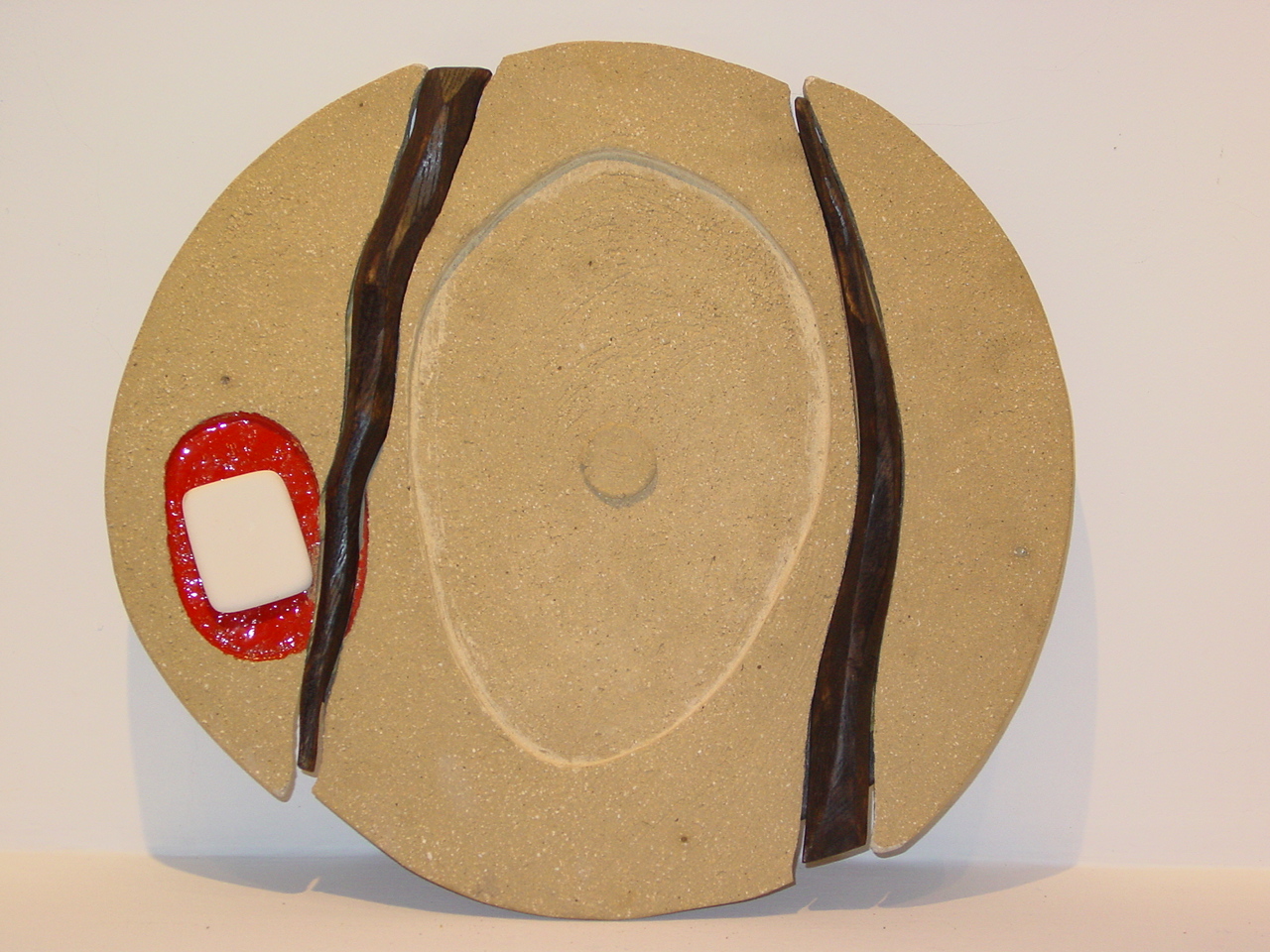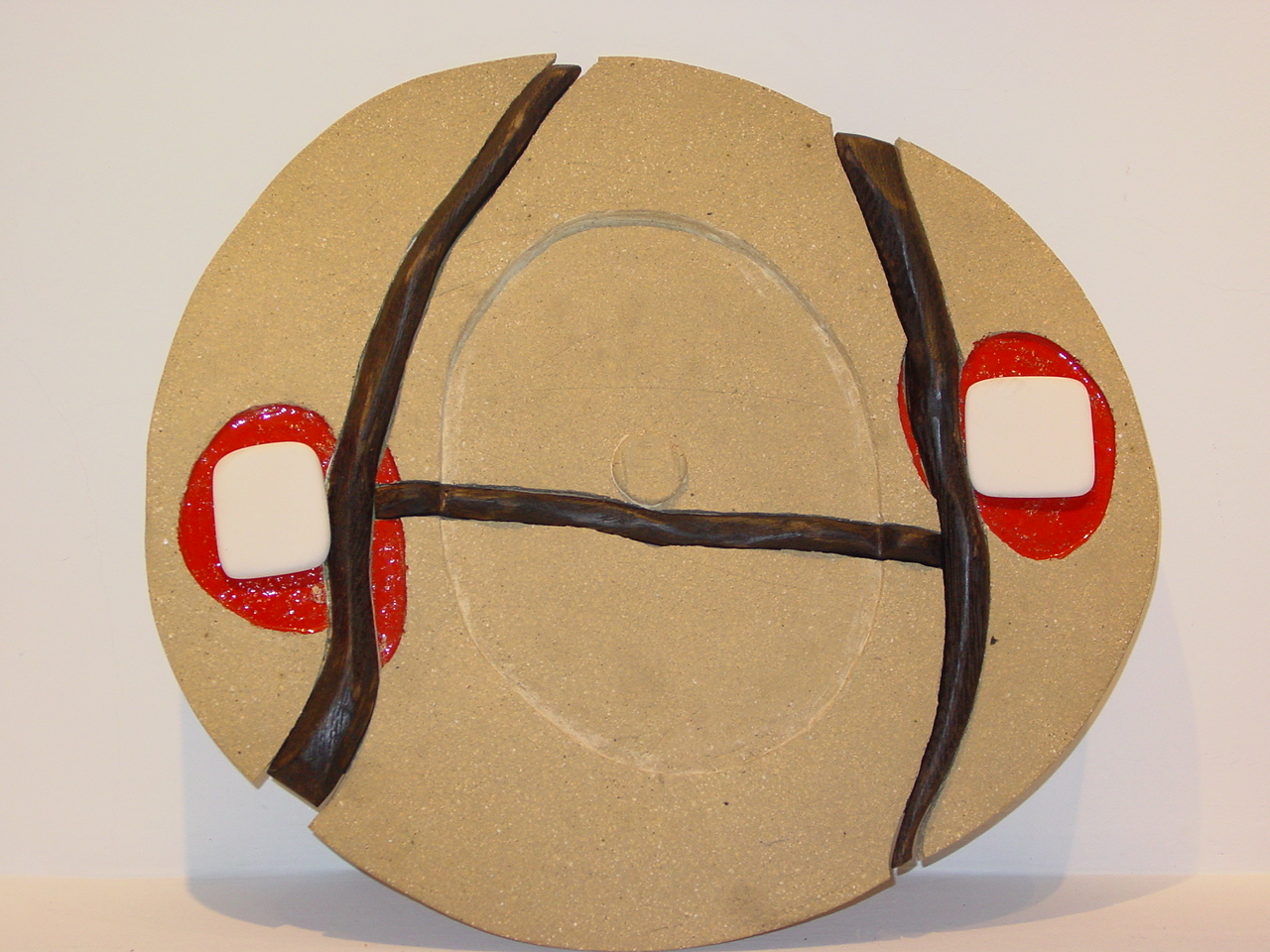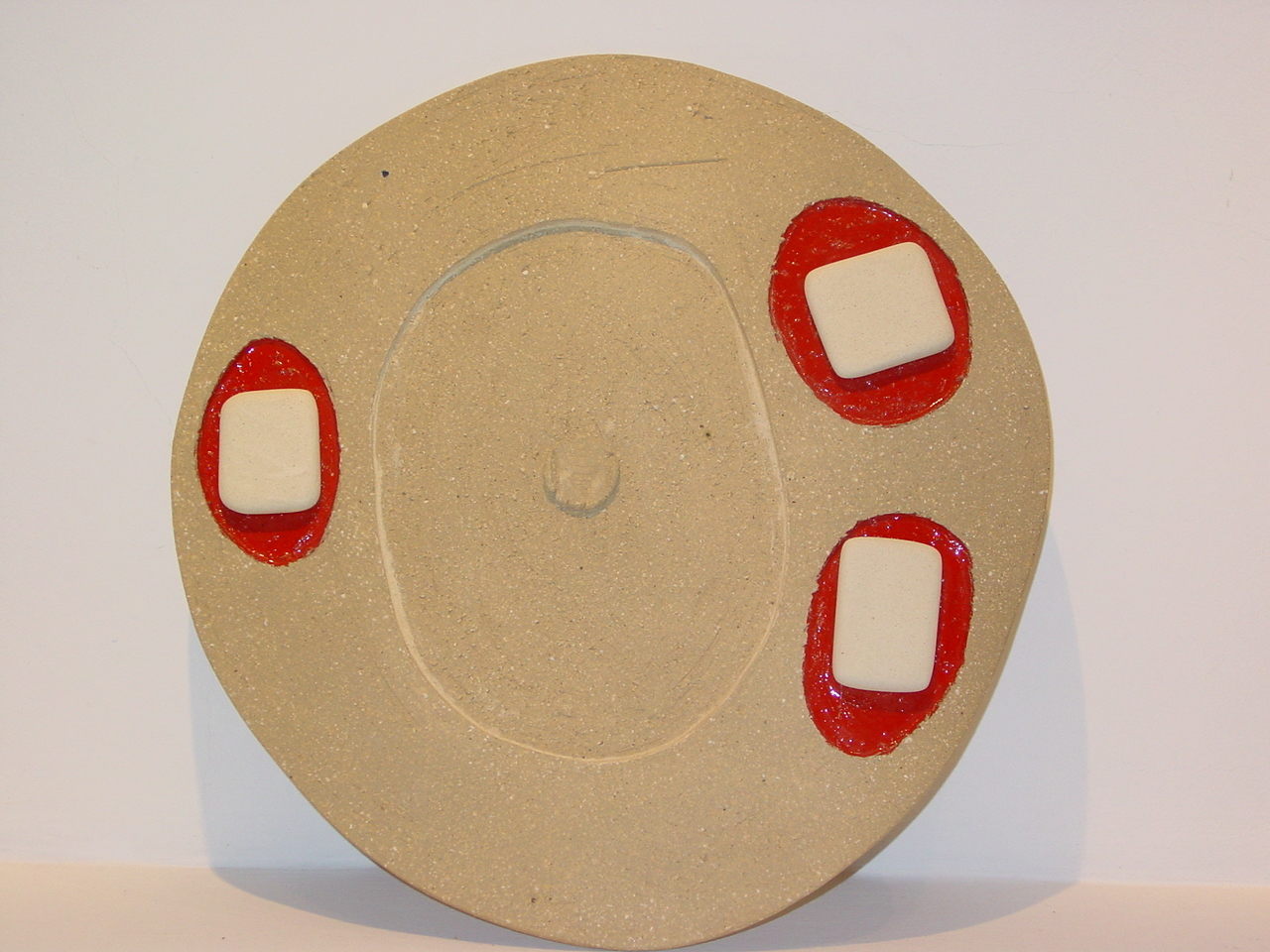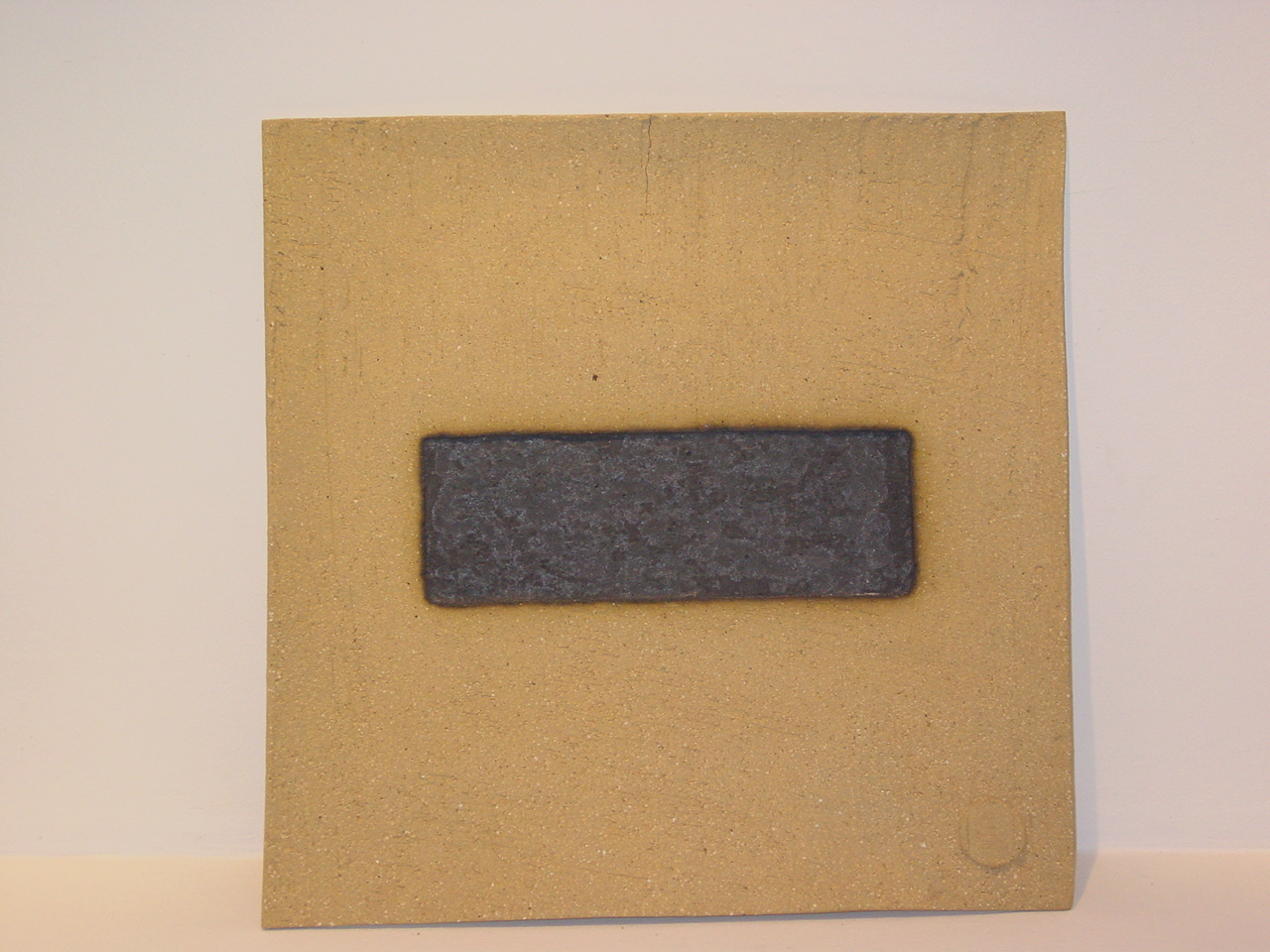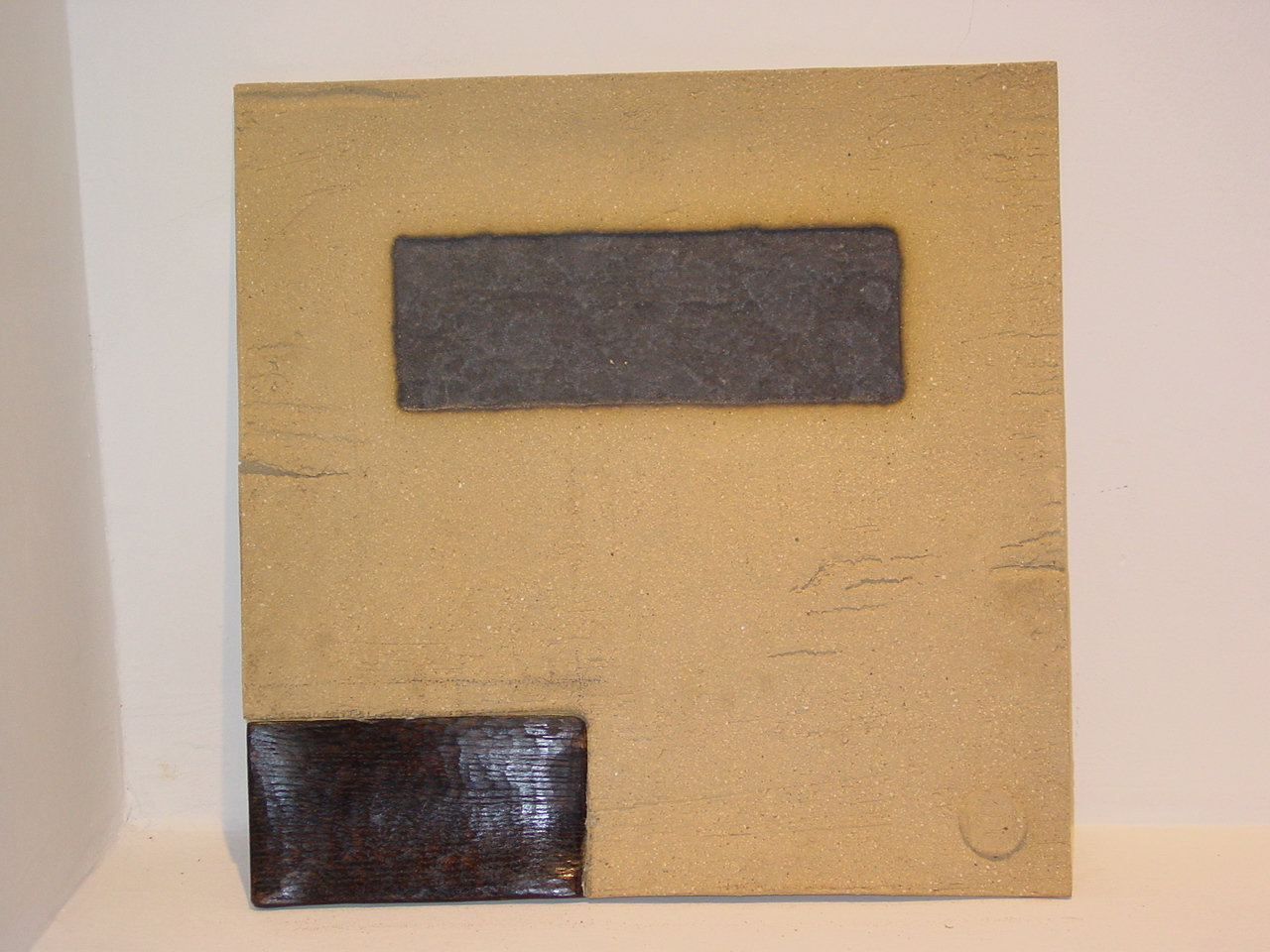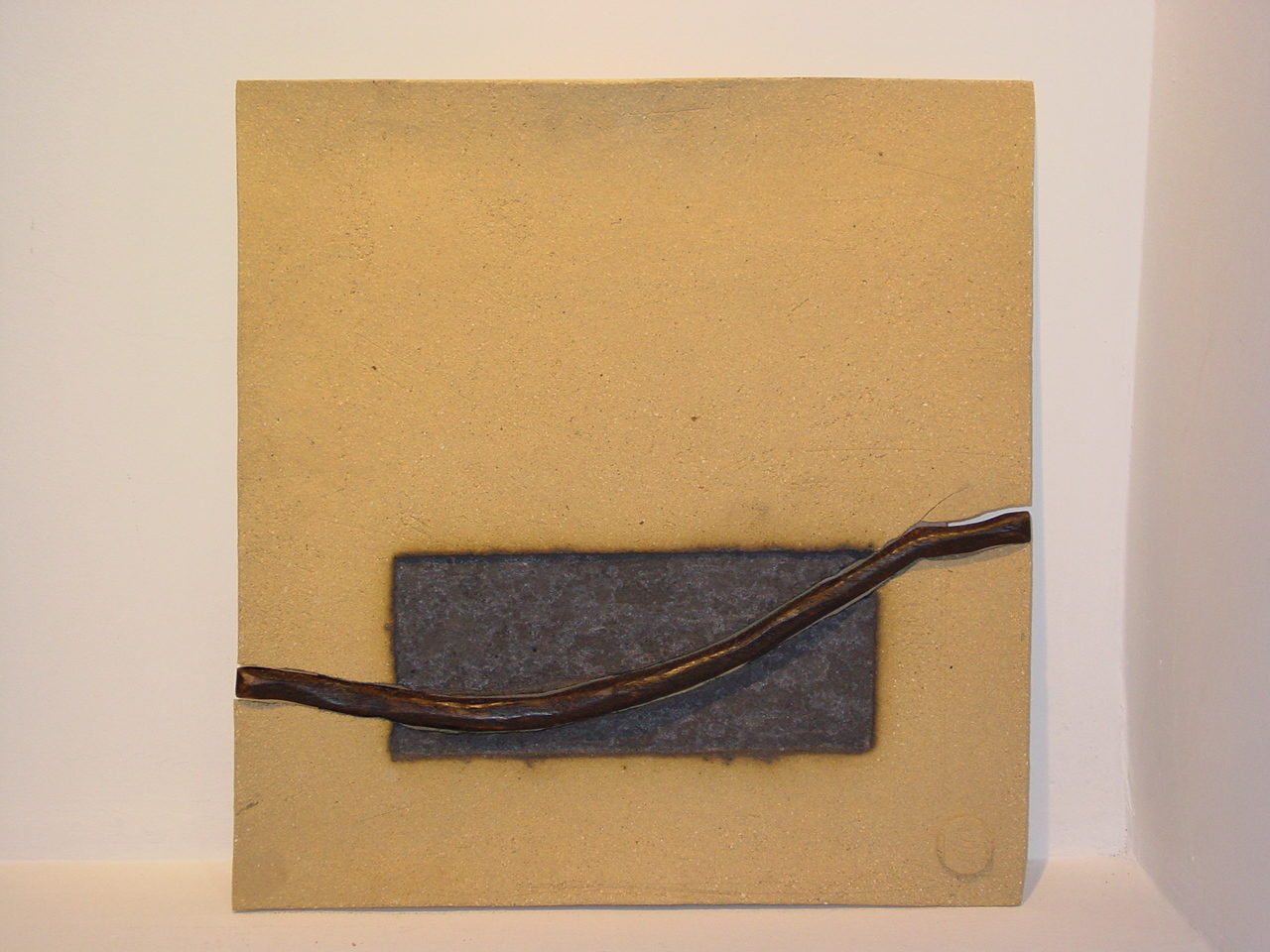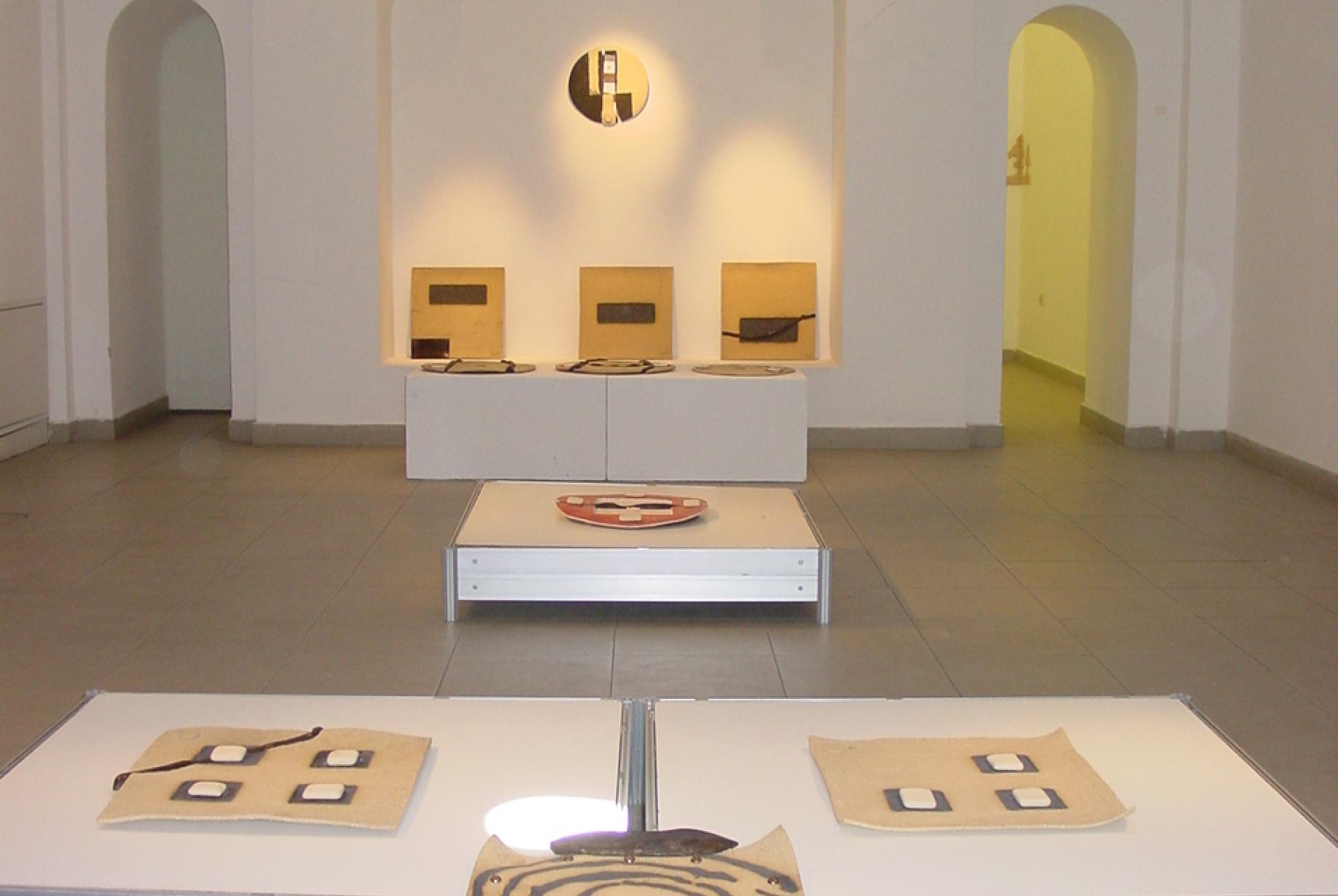
The joint performance of three ceramists or, to be more precise, three authors encouraged and "subjugated" to the material that carries within itself the destiny or a certain formal vocation, precisely implies the basic determinants of this material: solidity, color and subtlety.
Terracotta is a form in itself, and as such it encourages the life of forms.
The three authors connect three important things: clay, friendship and love of shapes. They work firmly by "treading the earth" because man's strength comes from there and ends there.
Krasimir Jidrov creates a witty constellation of life in the material, aware not to distinguish the terms by approaching the abstraction of objective reality, but rather he initiates or emphasizes the constant, yet still, changing character of an external composition: stylized (as they are in reality) - apple bites - bites or remnants of life, with a thought "about the meaning" that each bite is the same - a remnant of the whole. Therefore, Dzhidrov, where the remains are "undefined," contours them, and from the ephemeral mass of association or trace, defines its own mark of the recycled. He lucidly brings the suggestive into the portrait, experiencing the psychological touch with it through the deep modifications of the forms. Tangled or stained in mud, in the embrace of the Earth, these subtle clay manuscripts ennoble the chaos of everyday life, create the epidermis of space and absorb the light that shapes them. Although the processing did not change the balance and natural relationship of the parts, the external life of the material was transformed. And Djidrov has translated and transferred the external life of the material into the structural features: through his own interpretations of a possible contact with the Earth.
The experience of form in Filip Fidanovski acts as a higher principle of passive mass modeling. Although I believe that the author means that the material imposes its own form on the form, he is still thinking about the form itself and the many changing types of its appearance. What determines Philip is that he does not consider the formal vocation blind determinism, but its suggestiveness and strict requirements for its own attitude towards the forms of expression create the new order of expression for the master in his discipline. From mud, Philip weaves the personal discourse, the epidermis of: what is conveyed as chess, as a rebus, in the strange twist of nature, in its equivalent - its quantum and in its own core. Philip does not create the equivalent nature, or its replacement, he summarizes it in a minimalistic fusion created by fire and some mysterious forces.
Not only does it not support the principle of non-imitation, but it cultivates the creative originality that separates or selects from the material of nature the basic substance that finds itself in permanent renewal." Art, like chemistry, makes a constant processing - while the material is continuously transformed". And what is especially important: the sign - I think that for Philip it will be a basic determinant for his artistic perspective!
"By placing one or more elements in a composition, it emphasizes play, touch, togetherness, complementation, emptiness, loneliness... by melting one volume into another and opposing full and empty forms. At the same time, with that I capture the impression of a strict and solid stone, while the reality says that the basic material is soft and grateful clay - earth - dust".
Perhaps Vesna Osojnički is not consistent with her interpretation: clay-earth-powder - because the "hardness" or solidity, the strictness of the geometric arrangement (even when it comes to "unmasking") indicates a jovial flexibility or an executive analysis of the form to its a simplified synthesis. It is true that he tries to extract from the material of nature the substance of a new nature as a challenge.
Vesna Osojnicki is "burdened" by the geometry of living!
The purpose of art tends to define a certain power which can be transformed or defined by action - its true purpose is not the creation of series, but of character!
Victoria Vaseva Dimeska, June 2004
